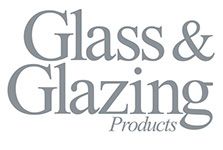
Materials science specialist, Dow, has announced that it will introduce a commercially available service for carbon-neutral silicones in building facades. Used for structural glazing, insulating glass, and weather sealing, the carbon-neutral silicones will be PAS 2060-verified, to help decrease the environmental impact of buildings. The innovation aims to allow builders to design with more freedom by engineering less impact.
“The commercial introduction of our carbon-neutrality programme for Dowsil silicones for building facades represents a true evolution in silicone carbon-neutrality,” said Markus Plettau, Dow’s global segment leader for building facades. “Aligned with the industry efforts towards developing net-carbon-zero buildings to reduce CO2 emissions, Dow is leading the way in decreasing the embodied carbon present in construction materials.”
According to the World Green Building Council, the building sector is responsible for approximately 39% of global CO2 emissions. This includes both embodied carbon and building operations. While the production of Dow’s silicone products requires energy, the use of these products requires very low energy in applications such as prefabricated façade elements and glass insulation, they claim, helping to significantly improve the energy efficiency of buildings. In addition, Dow’s silicone products’ proven durability allows insulated building envelopes to last more than 50 years, they claim. The energy or carbon ratio for silicone sealants conserves up to 20 times more energy than what is needed to produce them for insulated glass, according to the Global Silicones Council.
Carbon-neutral silicones can reduce to net zero the carbon needed to produce the silicone polymers. Carbon-neutral silicones for specific building projects has been described as a revolutionary offering, especially for technologies linked to the silicon metal manufacturing process, where Dow is positioned.
Markus is positive that silicone will remain the technology of choice when it comes to building and construction, not only because of its long-term performance and carbon footprint but also because it equips buildings with enhanced energy and greenhouse gas emissions performances. “The carbon-neutrality programme for Dowsil silicone materials is not only an advantage for architects, builders and building owners, but also a key to achieving significant ongoing carbon reduction through integrated design solutions, allowing these industry professionals to design with more freedom by engineering less impact,” he added.
Backed with PAS 2060 verification, which is internationally recognised for organisational carbon-neutrality, it is hoped that Dow’s carbon-neutral silicones will contribute to additional international green building certification points. Each product will have an environmental product declaration (EPD) that communicates transparent and comparable information about products’ the life cycle environmental impact.
In addition to carbon neutral silicones, Dow continues to develop innovative and sustainable solutions for the building and infrastructure markets. For more information on the latest developments, visit dow.com/highperformancebuilding.



